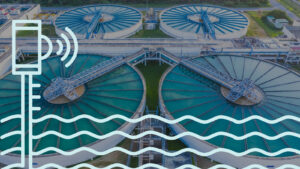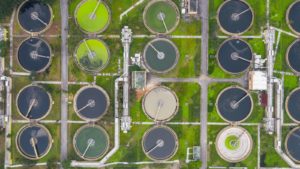Geographic Information System, also known as GIS Technology, is what is known as a spatial data infrastructure. GIS will provide us with the frequency of population and the distribution of that population across the landmass. GIS is capable of showing the different layers of soil, the stages of vegetation in a forest, the livestock on a farm, the number of children in a school, the path of a storm, roads, pipelines, and even a forest trail. Anything that can be scanned and integrated, will be shown by the GIS.
Most importantly, GIS utilised as an asset manager not only optimises management, but it provides accurate physical details of the asset for processing and most importantly, for maintenance. GIS can also be used to locate the mishaps of a system or a network in order to repair it. GIS can be used s a predictive tool as well.
Most importantly, GIS utilised as an asset manager not only optimises management, but it provides accurate physical details of the asset for processing and most importantly, for maintenance. GIS can also be used to locate the mishaps of a system or a network in order to repair it. GIS can be used s a predictive tool as well.
What Is The Relationship Between GIS And Asset Management?
It requires time and cooperation to manage a large number of assets. Even more, time is required to optimise the operation and upkeep of these assets. It is critical to handle these assets strategically. Private and governmental institutions may use asset management systems coupled with GIS to manage, visualise, analyse, and disseminate information about physical and infrastructural assets such as properties and easements, buildings, water and wastewater systems, signs, meters, and equipment. Asset management systems based on GIS can help you combine diverse data sources into a unified operational picture, enabling you to optimise the capabilities, lifetime, and performance of your assets while lowering running costs.
Due to the fact of GIS being the smartest way to manage assets, it has been the cause of generating productivity and efficiency gains. By using GIS, property owners, as well as large-scale property owners, could analyse each of their assets for tracking, maintenance, acquisition, and capital equipment.
Due to the fact of GIS being the smartest way to manage assets, it has been the cause of generating productivity and efficiency gains. By using GIS, property owners, as well as large-scale property owners, could analyse each of their assets for tracking, maintenance, acquisition, and capital equipment.
How Do I Utilise GIS In Optimising Asset Management?
Know Your Assets
Usually, each building has its use on the GIS portfolio and the inventory is where the assets will be found. To manage the inventory of assets, the following should be required; building usage, location, significance, design, fit-up, maintenance, and construction. These sets of data will be vital as the inventory needs to be updated on a frequent level to indicate the changes that would take places, such as demolitions, refurbishments, and new developments. Once a company has established the number of assets and what it may be in the future, next to assign each asset a value, this is a major part that needs to be taken into account, as the company would be able to know which assets are most reliable as the cost for each one is high and which assets can be excluded, as their cost will be much lower.
Here are a few terms that are important when assigning a value to the assets:
Here are a few terms that are important when assigning a value to the assets:
- Current replacement value- the cost of replacing an asset at present
- Performance in use- the value is prescribed to the actual asset for the user.
- Large-scale companies manage their assets by storing the historical cost of assets and raising the cost to the present value, which means they do not have the “worth” but only the cost of the asset.
When managing assets, it is important to keep track of the projects, repairs as well as maintenance actions that have been phased, neglected, and postponed. A backlog with the recent accurate figure will be the most effective way in which an asset manager could identify the viable assets to the firm and the problematic assets.
An asset manager should have a clear view of the building when inspected, and in comparison, to the other buildings in the portfolio. This will provide basic data on the rest of the buildings. Any changes that take place on or in the building should always be informed and known by the asset manager. Maintenance needs to be kept at a steady pace as well.
The buildings in the portfolio are known and their statuses are updated, it’s time to identify the buildings or assets that need maintenance, repairs, or reinvestments. However, the plans made to fill the requirements will also be required to fill the policy requirements as well and from there on, the maintenance can be done.
An asset manager should have a clear view of the building when inspected, and in comparison, to the other buildings in the portfolio. This will provide basic data on the rest of the buildings. Any changes that take place on or in the building should always be informed and known by the asset manager. Maintenance needs to be kept at a steady pace as well.
The buildings in the portfolio are known and their statuses are updated, it’s time to identify the buildings or assets that need maintenance, repairs, or reinvestments. However, the plans made to fill the requirements will also be required to fill the policy requirements as well and from there on, the maintenance can be done.
Data Collection And Management
All the designs that have been made for maintenance orders, repair proposals, and renewal information will be updated regularly, which means that the asset manager will have all the data that is new and fresh.
The asset manager must be fed with accurate pictures that fit the descriptions of the portfolio as well as the maintenance and repair proposals. The data is directly related to their physical location on the map. This is why the accuracy of the geospatial data plays a crucial role when entering the data into the asset manager. Satellite imagery is widely used in Geo-Spacing Assets.
The asset manager must be fed with accurate pictures that fit the descriptions of the portfolio as well as the maintenance and repair proposals. The data is directly related to their physical location on the map. This is why the accuracy of the geospatial data plays a crucial role when entering the data into the asset manager. Satellite imagery is widely used in Geo-Spacing Assets.
Data Analysis
GIS allows a 3D measurement which is used to calculate the heating and cooling of utility costs and it will use a formula to measure the square footage of a building or area. It will analyse the connections between buildings and predict the consequences if a pipeline, gas line or cable is broken. GIS has the upper hand over CAD and Computer-Aided Facilities Management Systems due to its ability to perform complex geographical analysis and geographical navigations.
What Is The Importance of GIS Technology Optimising Asset Management In Your Organisations?
Using the information provided above, it is evident that a GIS-based system is in charge of informing you of the ‘whereof all things. This may be fully utilised in terms of filling in market and service gaps by knowing where consumers, facilities, and rivals are located via the use of address locations, spatial database management, and query tools, among other methods of discovery. Example: A company can make an informed decision about where to locate their new assets. Explanation: Because of the way GIS mapping configures and gathers data, it has the potential to generate improvements in asset management methods. Organisations will struggle to properly plan for their asset management program if they do not gather data on their physical assets. Therefore GIS technology plays a vital role in optimising asset management insights.







